|
Task Management Software |
 |
|
|
|
|
| |
|
 TESTIMONIALS TESTIMONIALS
|
|
"...This is an excellent program. I'm so glad that I stumbled on to this when researching for task management programs. Very low learning curv, quite flexible, and the price is right. Tried at least 20 other programs, either too complicated, too expensive, or poor documentation..."
Chad Lindsey -
Honolulu, HI
|
|
|
|
|
|
|
|
Product Design Checklist |
|
|
|
|
|
|

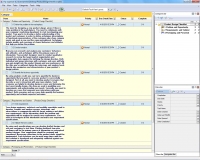 |
Product design is one of the three phases in the product lifecycle. It bridges Product Conceptualization and Product Development. Its purpose is to help developers to analyze product requirements, create appropriate solutions and make product specifications. Use this Product Design Checklist to learn more about this phase.
|
| Order 750 checklists in MS Word and PDF printable format at $49.99 USD only. |
BUY NOW!  |
- Problem and Opportunity.
- Define the problem in the marketplace. The need for designing a new product always arises if there is some problem in the marketplace. You need to collaborate with your company’s marketing department to start investigating your market. Your goal is to develop a better understanding of the market and customers in order to define archetypes (descriptions of functional representatives of the customers who share common needs and goals in one and the same marketplace). Archetypes include models and overviews of shared behaviors and attitudes that help you define the problem.
- Conduct analysis. Now you can research and analyze your customers’ behaviors and attitudes, and archetypes will be the primary source of information. Your product designers need to conduct qualitative research to review the target market segmentation and demographic data required for defining the design direction. Both individual and group interviews with customers and users will help you gain insight into the product domain and user preferences. All the data you’ve gathered during the interviews and analysis feeds directly into parameters and characteristics of your product’s design pattern.
- Quantify the business opportunity. By using analysis results you can try to quantify the business opportunity that you gain in case your product is successfully designed. First of all, you need to develop product scenarios that describe a user’s interaction with your new solution. Such scenarios are helpful to develop business cases and determine the best user-friendly design. Also they are used in modelling user requirements and understanding user needs. Secondly, you need to develop use cases that represent user interactions with your product. Both scenarios and use cases help quantify the business opportunity and estimate expected outcomes.
- Requirements and Solution.
- Write requirements. Your design engineers, architects and usability specialists need to develop, conduct and analyze surveys, interviews, and observations to communicate with the target audience and define user requirements. All the information about the problem and opportunity will be analyzed to specify user requirements. You need to investigate all this information and make user requirement specifications.
- Validate the best solution. By using such specifications you can develop drafted designs and ask your customers to test them. Eliciting feedback from your customers will be the primary source of information on conceptual product designs. User suggestions should be reviewed and considered. Necessary corrections to the product drafts should be implemented. Such iterations can be made many times until the best solution is developed and adequately validated against user requirement specifications.
- Prototyping and Presentation.
- Prototype the product. When the best product solution that meets user requirements has been identified and validated, the next step is to develop a prototype of this solution. A prototype should be developed in line with user requirement specifications. It should solve the customer problem and provide ways to exploit the business opportunity.
- Present the Product. Your prototype needs to be presented to your development team that will work on realizing the product’s concept taking into account...
| Order 750 checklists in MS Word and PDF printable format at $49.99 USD only. |
BUY NOW!  |
|





 |
CentriQS Tasks Management Solution 
Looking for multi-user task management software? Try CentriQS complete task management solution for planning, tracking and reporting tasks, projects, and schedules. Increase productivity of your small business or office by better organizing your employees' tasks and time.
 FREE Download CentriQS FREE Download CentriQS
|
|
|
|
|
|
|
|
|
|
CentriQS  -15% OFF -15% OFF |
All-in-one business management software
for small and midsize enterprises |
 |
|
|
| VIP Task Manager |
Multi-user project management software
to plan, schedule and track project tasks. |
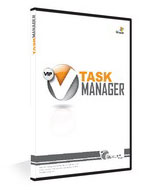 |
|
|
| VIP Checklists
|
More than 750 ready-to-use to-do lists
to plan your personal and business life |
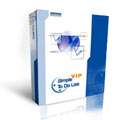 |
|
|
| VIP Team To Do List |
Professional task management software
to make and send team todo lists by email |
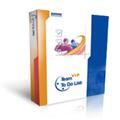 |
|
|
| VIP Organizer |
Personal time management software
to organize time at home and at work |
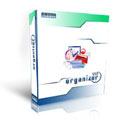 |
|
|
| VIP Simple To Do List
|
Simple and effective to-do list software
to plan daily chores, trips, wedding, etc. |
 |
|
|
|
|
|
|
|